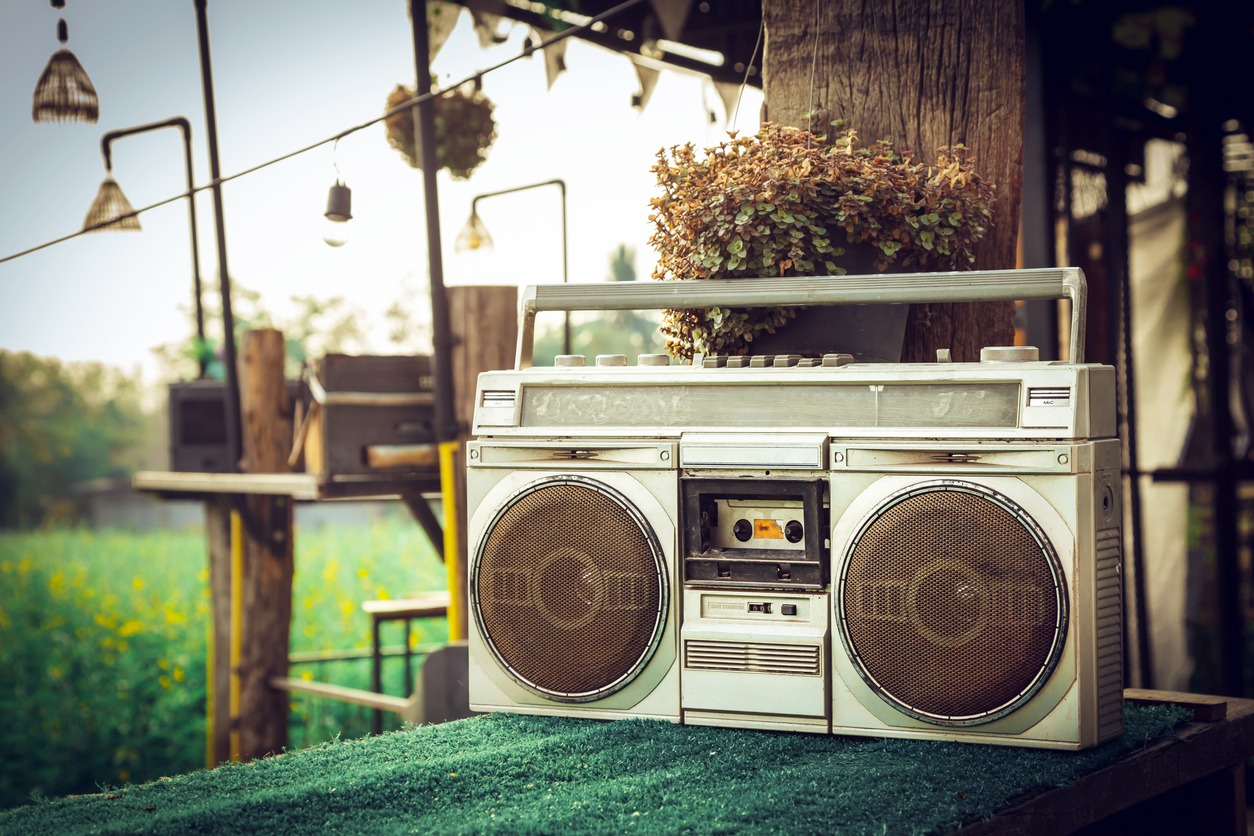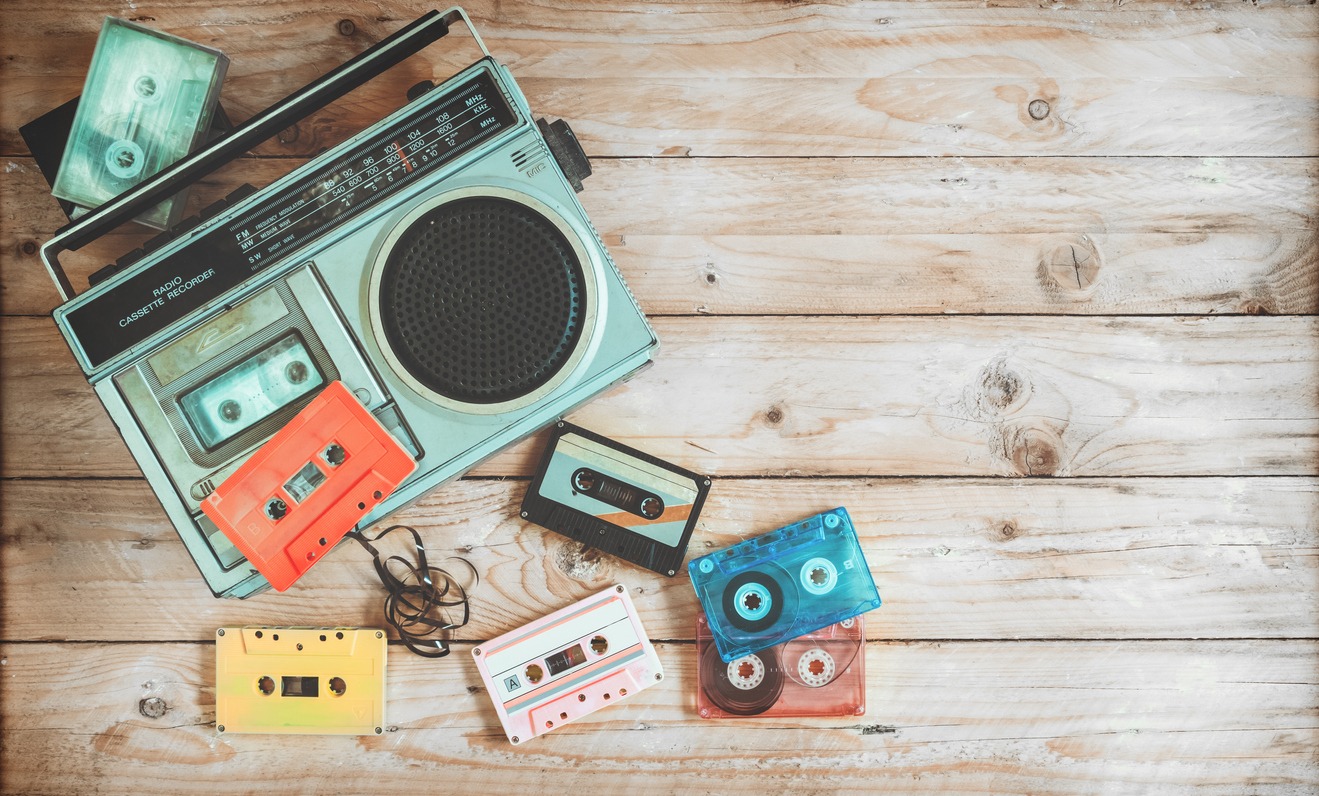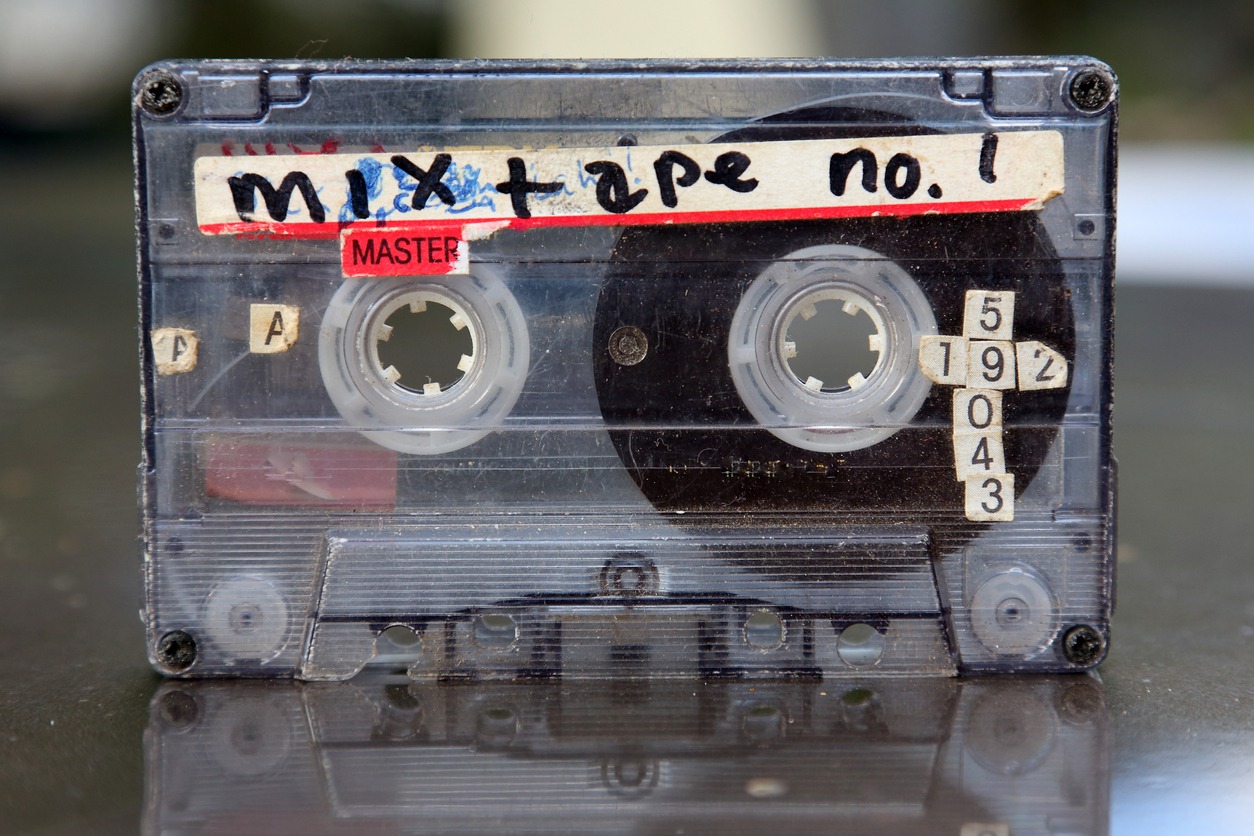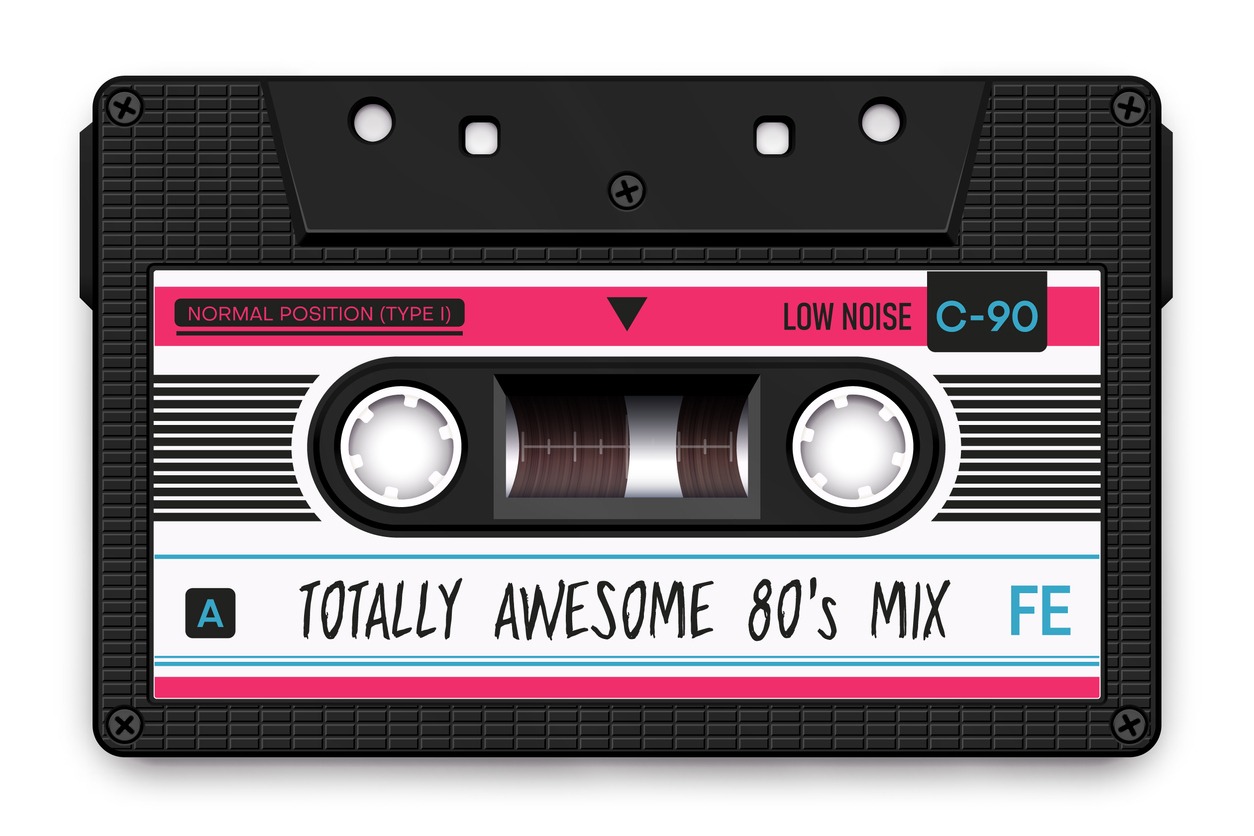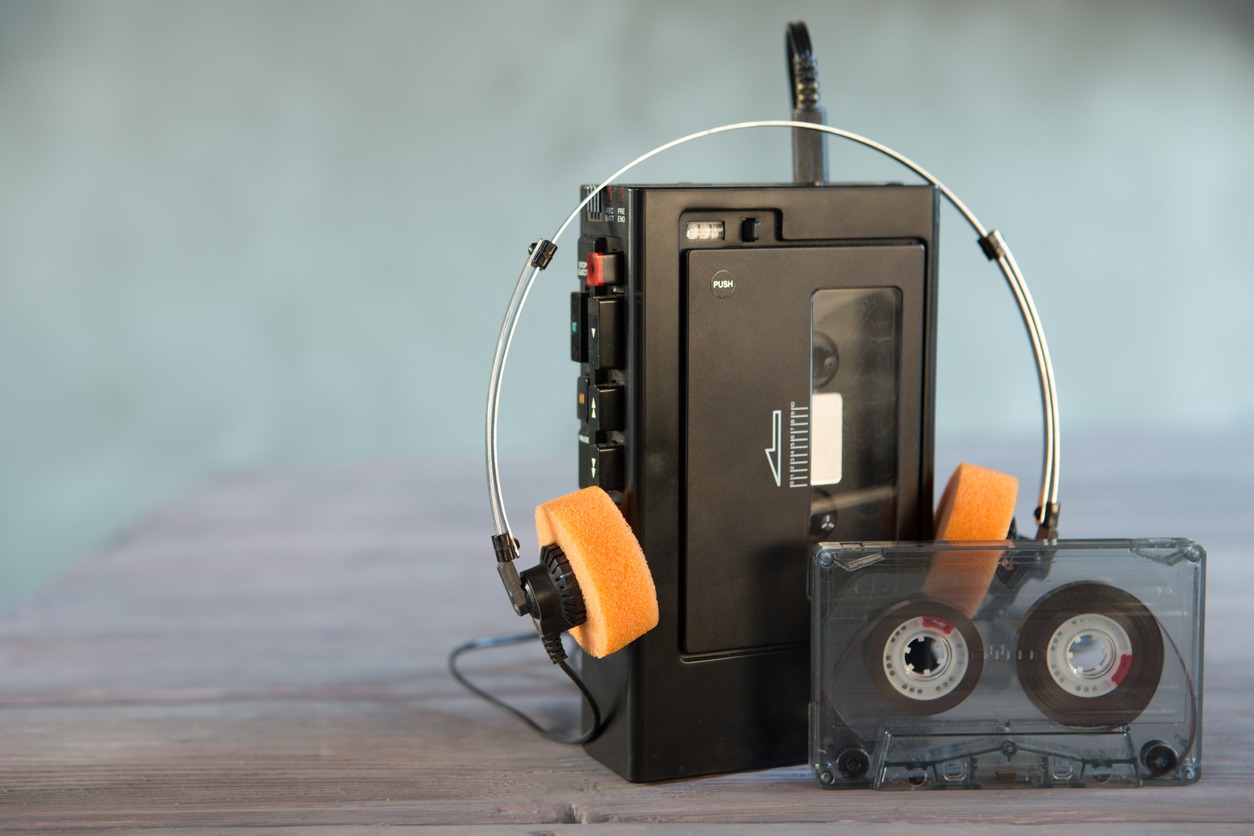In the 1980s, a revolution in music consumption took place, not in recording studios or concert halls but in the streets and homes of everyday music lovers. This transformation was driven by two iconic symbols of the era: boomboxes and cassette tapes. These devices didn’t just change how we listened to music; they altered the very fabric of music sharing and personal expression.
The 80s marked the dawn of portable music, a period where the soundtrack of life was no longer confined to static locations but became a dynamic, mobile experience. Boomboxes, with their loud, bass-thumping speakers, became a staple of urban landscapes, while cassette tapes offered a new level of personalization and accessibility, birthing the mixtape culture.
This article will explore how boomboxes and cassette tapes reshaped the music scene of the 80s, influencing everything from the emergence of new music genres to the way people interacted with and experienced their favorite tunes. From the streets to the recording studios, we’ll discuss the profound impact of these technologies on the era’s music and cultural landscape.
The Rise of the Boombox
The boombox, a portable music player characterized by its large size and powerful speakers, emerged as a cultural icon in the 1980s. Its rise marked a significant shift in how music was experienced in everyday life. Originally developed in the late 1970s, the boombox gained immense popularity in the following decade. It combined the features of a traditional home stereo system with the portability of a personal music player, allowing users to carry their music with them.
Significance in Popularizing Street Music and Public Consumption
The boombox became synonymous with street culture, particularly in urban areas. It was more than a music player; it was a public statement, a way to share music and make it a communal experience. This shift towards public music consumption played a crucial role in the spread of new music styles, notably in the rise of hip-hop and breakdancing cultures, where the boombox was a staple.
Role in Different Subcultures, Particularly Hip-Hop
In the hip-hop community, the boombox was a symbol of the genre’s grassroots beginnings. It was instrumental in the spread of hip-hop music, as artists and fans alike used it to play and share their music in neighborhoods, parks, and streets. The boombox also facilitated impromptu breakdancing battles and rap sessions, contributing to the vibrant, communal atmosphere that was foundational to hip-hop culture.
The boombox was more than a technological innovation as it was also a cultural phenomenon. Its ability to mobilize music, to turn any place into a potential stage or dance floor, embodied the spirit of a generation and reshaped the social dynamics of music consumption. The rise of the boombox in the 1980s is a testament to the era’s emphasis on shared musical experience and the democratization of music listening.
The Cassette Tape Revolution
Parallel to the rise of the boombox was the emergence of the cassette tape, a format that revolutionized the music industry and how people interacted with music on a personal level. Introduced in the 1960s, cassette tapes gained widespread popularity in the 1980s. They were more compact and durable than their predecessors, such as vinyl records and 8-track tapes. The portability of cassette tapes made them ideal for on-the-go music listening, fitting perfectly with the mobile lifestyle that the boombox symbolized.
Advantages of Cassette Tapes Over Previous Music Formats
Unlike vinyl, cassette tapes were not prone to scratching and were more resilient to wear and tear, making them a more practical choice for everyday use. They allowed for easy recording and playback, giving users the freedom to create custom playlists and record songs directly from the radio.
Facilitation of Personalization and Portability in Music Listening
Cassette tapes enabled a level of personalization in music consumption that was previously unavailable. Listeners could record their favorite songs in any order, creating personalized playlists long before the digital age. The combination of cassette tapes and portable players like the Sony Walkman revolutionized music listening, making it a deeply personal experience. People could now curate their soundtracks, enjoying them in private or on the move.
The cassette tape was more than just a new music format because it also represented a shift in the relationship between listeners and their music. It allowed for greater agency in how music was consumed, shared, and enjoyed, laying the groundwork for many aspects of modern music culture, including the playlist and mixtape phenomena. The cassette tape, in conjunction with devices like the boombox and Walkman, marked a significant chapter in the evolution of music as both a personal and social experience.
Birth and Evolution of Mixtape Culture
The advent of cassette tapes gave rise to one of the most personalized forms of musical expression: the mixtape. This phenomenon became a cornerstone of 80s music culture, influencing how people shared and experienced music.
A mixtape is a compilation of songs recorded onto a cassette tape, typically by an individual for personal use or to give to someone else. It originated from music enthusiasts compiling their favorite tracks, either from other tapes, vinyl records, or directly from the radio. This practice became a form of personal expression, a way to convey emotions or messages through a curated selection of songs.
The Process and Art of Creating Mixtapes in the 80s:
- Creating a mixtape was a thoughtful and often time-consuming process. It involved carefully selecting songs that conveyed the right mood or message and arranging them in an order that told a story or maintained a certain flow.
- Recording a mixtape required a dual cassette deck or a radio with a cassette recorder, allowing individuals to record songs directly as they played.
Impact of Mixtapes on Music Sharing, Personal Expression, and Community Building:
- Mixtapes became a popular way of sharing music among friends and communities. They were used to introduce others to new genres or artists or as a means of connecting with others through shared musical tastes.
- They also became a romantic gesture, with individuals creating mixtapes to express feelings for someone else.
- In the hip-hop community, mixtapes became a means for DJs and artists to showcase their skills, distribute new music, and build a following. These tapes often included remixes, collaborations, and exclusive tracks not available elsewhere.
The mixtape culture of the 80s was a testament to the power of music as a means of personal expression and connection. It laid the foundation for modern playlist curation and was a precursor to the way music is shared and discovered in the digital age. Mixtapes encapsulated the individualistic and creative spirit of the era, making them a cherished aspect of 80s music culture.
Impact on the Music Industry and Popular Culture
The widespread adoption of boomboxes and cassette tapes in the 1980s had a profound impact on both the music industry and popular culture, reshaping them in several significant ways.
- Influence on Music Production and Distribution: The popularity of boomboxes and cassette tapes influenced the types of music being produced. Artists and record labels began creating music with the portable listening experience in mind. The ease of copying and distributing music on cassettes led to a rise in music piracy, which posed a challenge to the music industry, prompting a reevaluation of copyright laws and distribution strategies.
- Shift in Music Industry Focus: The music industry shifted its focus to cater to the growing demand for portable music. This included the production of more cassette tapes and an increase in marketing efforts towards younger, more mobile audiences. Record companies started to see the value in music videos as promotional tools for their artists, dovetailing with the rise of MTV, which provided a visual platform for these videos.
- Reflection of 80s Pop Culture and Youth Identity: Boomboxes and cassette tapes became symbols of 1980s youth culture, embodying the spirit of rebellion, freedom, and individuality. They played a significant role in the proliferation of new music genres like hip-hop, which heavily relied on cassette tapes for spreading mixtapes and recorded rap battles. These technologies also influenced fashion, with artists and fans often seen carrying boomboxes and the rise of streetwear styles that complemented the hip-hop culture.
The impact of boomboxes and cassette tapes on the music industry and popular culture of the 1980s was far-reaching. They not only changed how music was consumed and distributed but also played a crucial role in shaping the cultural landscape of the era. Their influence extended beyond the realm of music into broader aspects of society, leaving a lasting legacy on both the industry and the cultural identity of the time.
Technological Innovation and the Legacy of Boomboxes and Cassette Tapes
The popularity of boomboxes and cassette tapes in the 1980s didn’t just symbolize a cultural shift as they also spurred technological innovations and left a lasting legacy in the world of music and beyond.
Technological Advancements Spurred by Popularity
The demand for improved sound quality in portable devices led to technological advancements in audio engineering. This included better speaker designs, enhanced battery life, and more compact, efficient electronic components.
The cassette tape’s popularity also drove innovations in magnetic tape technology, improving sound fidelity and durability, which would later benefit other formats like camcorders and data storage.
Transition to Modern Portable Music Players and Digital Formats
The concept of portable music and personalized playlists, popularized by boomboxes and cassette tapes, paved the way for the development of portable CD players in the late 80s and eventually to MP3 players and smartphones.
The digitization of music, leading to formats like MP3 and streaming services, can trace its roots back to the personal, portable listening experience that boomboxes and cassettes offered.
Lasting Legacy in Contemporary Music Culture
The mixtape culture that emerged from cassette tapes evolved into modern playlist creation, seen in digital platforms like Spotify and Apple Music, where users curate personal collections of music.
Boomboxes and cassette tapes have a nostalgic value today, often celebrated in retro-themed media and fashion, and continue to be a symbol of the democratization of music consumption and the DIY ethos. These devices also left an enduring mark on pop culture, inspiring numerous references in film, literature, and art, and remain icons of the 80s music and cultural scene.
The legacy of boomboxes and cassette tapes is evident in how we experience music and media today. Their influence extends beyond nostalgia, representing a significant shift towards personalization in entertainment and a milestone in the journey towards our current digital media landscape. They remind us of a time when music was not just a personal experience but also a shared social phenomenon, shaping not just the technology of music but its very soul.
Conclusion
The era of boomboxes and cassette tapes in the 1980s marked a significant chapter in the history of music and popular culture. These devices revolutionized the way we experienced and interacted with music, introducing a new era of portability, personalization, and social expression. From shaping the music industry and influencing emerging genres to leaving a lasting legacy in technology and pop culture, the impact of boomboxes and cassette tapes is still felt today. They remind us of a transformative time when music was not just a listening experience but a vibrant, shared part of everyday life.
